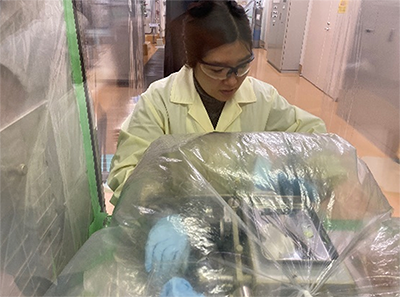Toward Steady Discharge, Gas Absorption and
Release Characteristics Occurring at Wall Surface
In order to commercialize a fusion reactor using plasma, it is necessary to maintain a stable plasma for a long period of time. This is called steady-state discharge. One of the challenges to realize steady-state discharges is to understand and control the behavior of fuel particles absorbed and emitted from the wall during the discharge.
In the currently planned magnetic confinement fusion power system, part of the system is designed so that the plasma impinges on a device called a divertor. When the plasma strikes the divertor, the surface of the divertor changes significantly depending on the temperature and energy. Even in areas not directly hit by the plasma, atoms and molecules of the opposite wall material released by the plasma adhere to the surface. Thus, the surface condition of the material varies greatly from place to place, and changes in the surface condition affect the absorption and emission characteristics of the fuel particles. To understand where, to what extent, and what causes fuel particle absorption/release phenomena in a vacuum vessel, it is necessary to understand the surface conditions of the wall surfaces.
To understand the behavior of fuel particles in a vacuum vessel, I have studied the location dependence of fuel particle absorption using large plasma systems. I have also studied phenomena that occur under specific plasma irradiation conditions using linear plasma devices in Japan and overseas. In this way, we combine experiments that simulate actual plasma using large plasma devices with rudimentary research using linear plasma devices. One of our duties is to manage and maintain the equipment necessary for experiments, and we sometimes modify the equipment to suit our own research projects.
The photo shows an experiment being conducted in a controlled area in Rokkasho, Aomori Prefecture. Wall materials are being analyzed at the Joint European Torus (JET).
Miyuki YAJIMA
Assistant Professor,
Assistant Professor, Transports in Plasma Multi phase Matter System Unit

YouTube
